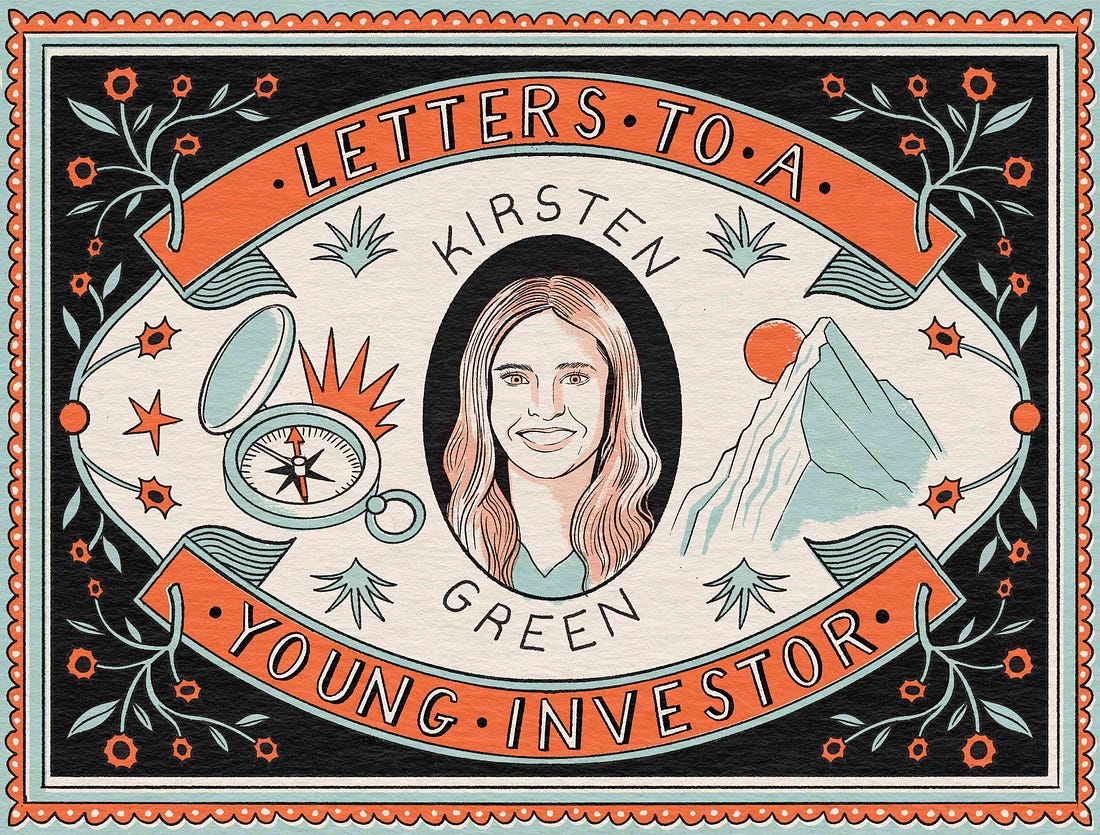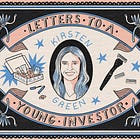|
How to Build a Tier 1 Fund
Kirsten Green’s tactical lessons from scaling Forerunner into a venture force.
"The best long-form essays on VC & Private Companies. " - a premium member
Friends,
The lifespan of most venture firms is short. Just a third of new managers make it to a Fund 2, and a minuscule 10% live to see their fourth vintage. If you were to look at the average, you would conclude that these organizations are the fruitflies of the investing world – here for a busy, buzzy day before tumbling to their death.
But averages are obscure. Yes, most firms die quickly, but some live for decades or longer. Both Sequoia Capital and Kleiner Perkins have celebrated their 50th birthdays; Bessemer has lived past 100. These are the tortoises of the venture world, surviving multiple eras and cycles.
Though it still has several decades ahead of it, Forerunner is charting a rare trajectory that suggests it may join the asset class’s grand dames. Since Kirsten Green founded the firm in 2012, it has raised nearly $3 billion in capital across nine separate vehicles. In tandem, it has developed a brand and reputation as an elite shop, especially in the consumer category.
In short, it has defied the odds that face new firms, becoming an established player in the venture firmament. In today’s edition of “Letters to a Young Investor,” Kirsten unpacks – in detail – how she’s driven Forerunner to its current position. How did she pick her first partner? What qualities does she look for in junior investors? When does it make sense to bring certain functions like research in-house? How does she manage the operational challenges of building a fund with the contemplative time needed to make sound investment decisions?
The result is an honest reflection on the choices and challenges of building a firm designed to outlast its architect.
This is the third and final correspondence between Kirsten and me. To catch up on the previous letters, jump in here:
Letter 1: The Long Road to Forerunner
Letter 2: A Consumer Investing Masterclass
What you’ll learn
How Kirsten picked a partner. Forerunner started life with one investor. But from the very beginning, Kirsten understood that building a franchise would require recruiting other sharp investors. She unpacks how she de-risked bringing on board a novice investor who has become a key leader at the firm.
The traits she looks for in new hires. Venture capital’s long feedback cycles make it impossible to hire a junior investor with a truly proven track record. Because of that, you must base your decision on proxy characteristics. Kirsten shares the traits she values most highly and the heuristics that drive her hiring decisions.
Why she built out an in-house research function. It has been popular for venture firms to build out large “platform” teams over the past 15 years. Forerunner has taken a more calculated approach, picking specific functions to own in-house. Kirsten shares how she thought about establishing a dedicated research team.
Her stepwise strategy to level up. Rather than picking a dozen different initiatives to undertake at once, Kirsten has found a structured way to keep growing Forerunner’s capabilities. Every year, she picks two major initiatives she believes will grow the firm’s mastery.
The real challenges of balancing investing and fund-building. To start a fund is to take on two roles: founder and investor. At the same time as you make investment decisions, you must build your firm’s foundation and drive it forward. Each requires different skill sets and can prove tricky to balance.
Unlock the full “Letters” series
Kirsten is the fourth guest in our growing “Letters” series – intimate correspondences with exceptional entrepreneurs and venture capitalists. This includes “Letters to a Young Investor” and “Letters to a Young Founder.” Previous guests include:
We have some incredible correspondences coming up that you won’t want to miss. To unlock the full collection now and ensure you’re first to receive our next ones, join our premium newsletter, Generalist+, today.
Brought to you by Mercury
To you, it’s not just a transaction in your bank account.* It means more.
It’s more than a wire, it’s investing in the people you believe in. It’s more than a bill, it’s unlocking the office space you need to grow. It’s more than issuing a credit card, it’s empowering your team.
The truth is, banking can do more. It’s the difference between banking that holds your money, and banking that helps you achieve your ambitions.
That’s why Mercury brings together all the ways you use money, in a single product that feels extraordinary to use.
Visit mercury.com to join over 200K entrepreneurs who use Mercury to make more possible for their businesses.
*Mercury is a financial technology company, not a bank. Banking services provided through Choice Financial Group, Column N.A., and Evolve Bank & Trust; Members FDIC. The IO Card is issued by Patriot Bank, Member FDIC, pursuant to a license from Mastercard®.
Mario’s letter
Subject: How to Build an Elite Fund
From: Mario Gabriele
To: Kirsten Green
Date: Friday, March 7 2025 at 6:12 PM GMT
Kirsten,
I can’t tell you how much I enjoyed your last letter. As I said when publishing it in The Generalist, I think it may be my favorite we’ve published as part of this series. Your correspondence illustrated just how much rigor there is in consumer investing, even from the earliest stages. It is not about pure, miraculous instinct but a deep comprehension of behavior and business models. I learned a great deal.
When we talk about venture capital, we tend to focus on the investments. This makes sense! By definition, to be a good investor, you must make good investments. Why wouldn’t we spend our attention on this defining and thrilling part of the job – a territory populated with outliers and grand slams, multi-fund returners, and 1000x wins? Though no one can claim to be a great investor without the record to back it up, there are other vital parts of the job – especially if you’re a fund manager.
It’s this part of the craft that I’d love to focus on in today’s correspondence: building and scaling an elite firm from scratch.
Those who read our first correspondence will remember the particulars of your origin story: after a career in traditional finance, you embarked on a decade of angel investing, before launching Forerunner in 2012. You were a solo-GP long before that terminology existed, managing a $42 million Fund I.
Fast-forward 13 years, and Forerunner has a 15-person team, including three (?) investing partners. Your latest fund, Forerunner VII, totaled $500 million, bringing raised capital to approximately $2.7 billion (at least by my count). As you’ve scaled your team and AUM, you’ve also succeeded in building a respected, premium brand – a huge advantage in venture capital, especially as the industry has grown more crowded.
Achieving all of this in a little over a decade is unusual. Most venture firms die quick deaths, with reportedly only a third making it past Fund I and just 10% hitting a Fund IV. Of those that survive, many may remain small or unheralded. Those that become elite franchises often take decades to do so.
All of these factors suggest that you are not only an exceptional investor but also a gifted entrepreneur. Though those who start funds aren’t often recognized as such, they are founders. Venture firms grow differently than the startups they back, but they are businesses all the same, requiring operational intelligence, smart strategy, and talented people to thrive.
Putting on your founder hat, I’d love to explore some of the key entrepreneurial facets of your journey in the hopes of getting a clearer sense of how you built Forerunner into the fund it is today.
Let’s start with investing talent. Beyond capital, this is a venture firm’s core product, and critical to seeing more and better deals, winning more competitive rounds, and delivering better service to entrepreneurs. How have you thought about building Forerunner’s team over the years?
I mentioned that you started Forerunner as a solo GP, but it didn’t take long for you to add Eurie Kim as a partner. She joined the same year the fund was founded, in 2012. Did you know you wanted to bring aboard a partner straight away? What problem were you solving by adding someone from the jump? And what was it about Eurie, specifically, that made you feel as if she was the right partner? Did you have to test this relationship before committing to partnering for the long term?
Finding strong junior talent can be tricky for venture firms, especially if you hope to train them into partners. Because of venture’s long feedback cycles, it takes years to know whether you’re any good and decades to gain definitive proof. When you’re assessing potential junior investors, what traits are you looking for? What signals have you found predictive that might surprise others? What are characteristics that Forerunner cares about that other firms might not emphasize? What do you wish you’d understood about finding and cultivating young investing talent that you didn’t when first starting out?
In terms of organizing and tracking the investing team’s performance, are there certain metrics you care about? What indicates to you the team is humming or that it appears to be stalled a bit?
Beyond Forerunner’s investors, you’ve built out a strong support team with a COO, Head of Research, and VPs of Finance, Data, and Marketing. At what point in Forerunner’s journey did it make sense to invest in these other functions? What was the strategy behind building out these parts of the firm? I’d be especially interested in the role of Research and Data in the Forerunner machine. How do these functions influence the way the firm works and what it focuses on? For newer fund managers, are there any areas you think are especially important to address proactively?
As mentioned earlier, you’ve grown Forerunner’s fund sizes over the years – though not strictly linearly. Fund V was $500 million (2020), followed by a $1 billion Fund VI (2022), before returning to a $500 million Fund VII. Every manager knows the truism “Your size is your strategy.” How have you thought about progressively evolving your strategy as you’ve grown? Does it feel like $500 million is the sweet spot for Forerunner’s approach, or is this smaller vintage simply a reflection of different market realities?
Though you’ve scaled AUM, it seems like, philosophically, Forerunner has stayed focused. You invest beyond pure consumer, but even your B2B investments tend to have more “consumer-y” sensibilities. Over the past 13 years, have you ever considered taking the fund in a radically new strategic direction? For example, over the past decades, we’ve seen firms build out in all manner of unexpected directions: Sequoia and a16z running accelerators; General Catalyst buying a hospital system; Kleiner Perkins and Sequoia both investing in large international practices before recentering closer to home. Have you ever considered rewiring how Forerunner works or running a strange new experiment? Does “innovating” on the core functionality of venture make sense to you?
I would imagine that one of the challenges of running your own firm is that you cannot devote yourself fully to investing. How do you end up managing your time? What does the split between operating and investing look like for you? I do a version of this at a much smaller scale.
One of the challenges I’ve noticed is that flipping from working on operating to investing doesn’t just require a change of focus but fundamentally a different cadence. When I’m thinking about running The Generalist, I can make decisions quickly, knowing that most are “two-way doors.” Meanwhile, when I make decisions for Generalist Capital, I know that each is a “one-way door,” potentially worth millions in opportunity costs. Do you find it tricky to toggle between thinking “fast” and “slow” like this? What helps you get into the right headspace?
Looking back on your time building Forerunner, what have proved to be the biggest operational challenges and unlocks? What did the founder-Kirsten of five years ago worry about that the founder-Kirsten of today has solved? What advice would you give to fund managers that you wish you’d received?
I really have enjoyed this correspondence so much. Thank you for your time, thought, and generosity.
With gratitude,
Mario
Kirsten’s Response
Subject: How to Build an Elite Firm
From: Kirsten Green
To: Mario Gabriele
Date: Monday, March 31 2025 at 5:16 PM PT
Dear Mario,
Your letter brought a smile to my face. I'm so touched that our previous correspondence resonated with you – there's something uniquely gratifying about connecting with people who appreciate the rigor beneath the surface of investing. It isn't just pattern recognition or gut instinct; it's about understanding the intricate dance between human behavior and business fundamentals.
Building Forerunner has been an entrepreneurial odyssey in its own right, one that's forced me to grow in ways I never anticipated when I first ventured out alone. You're right that venture firms are businesses, too, though they're rarely recognized as such. The journey from a solo GP with a $42 million fund to where we stand today has been filled with intentional decisions, unexpected challenges, and countless moments of both doubt and conviction.
When I started, I deeply valued the idea of partnership. I craved someone to exchange ideas with, someone who would elevate thinking through spirited debates, someone equally invested in both the work itself and how we approached it. I explored numerous partnership possibilities before launching Forerunner, but something was always missing. I had developed this clear vision – not just for immediate investments, but for what we might build over time, what ethos would guide us. The alignment I sought proved elusive.
Rather than compromise on that vision, I made the decision most entrepreneurs face at some point: to start alone despite well-meaning warnings about the challenges ahead. I've learned there are multiple paths to success, each with its own trade-offs. The key is committing fully to whichever path you choose.
Once I had visibility into successfully raising that first fund, I immediately began thinking about team-building as part of creating a firm with lasting foundations. I had been fortunate to meet Eurie about a year before starting Forerunner, and she remained in my thoughts throughout fundraising. Our journey together started with Eurie joining at a time when she was new to venture capital. We built a relationship where she could learn the ropes while we both discovered our complementary strengths and working styles. This apprenticeship period allowed us to build genuine trust and mutual respect, revealing the potential for a powerful, true partnership that has continued to evolve over time.
What's remarkable about our partnership is that delicate balance – we're alike enough for seamless collaboration but different enough to create the dynamic tension that leads to better decisions. We sometimes finish each other's sentences, yet often engage in debates that either build ideas up or rightfully tear them down. This duality serves us well, not just in evaluating potential investments but in navigating Forerunner's evolution.
Talent assessment in venture has fascinated me throughout this journey. The industry's extended feedback cycles make traditional performance evaluation nearly impossible. How do you know if someone has "the right stuff" when definitive proof might be a decade away? I've come to look for a constellation of attributes rather than a rigid template...
Subscribe to The Generalist to unlock the rest.
Become a paying subscriber of The Generalist to get access to this post and other subscriber-only content.
A subscription gets you:
| Premium subscriber-only posts | |
| Learn from legendary investors and founders | |
| Post comments and join the conversation |



